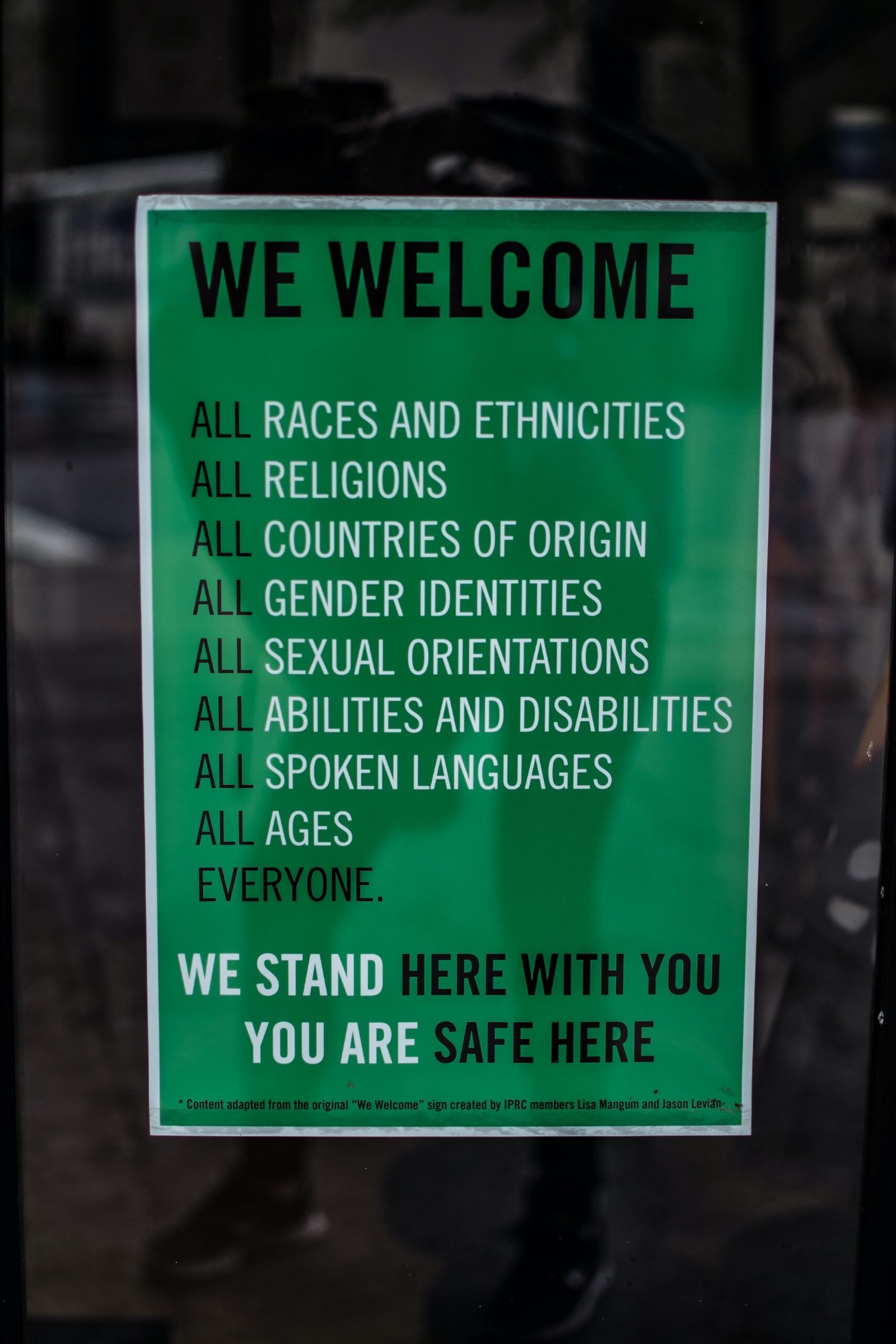Summary:
In today’s globalized world, cultural diversity plays a crucial role in the success of businesses. This blog post explores the importance of embracing cultural diversity in the workplace and provides practical tips on how to foster inclusion and maximize the benefits of a diverse workforce.
Introduction:
Imagine walking into a workplace where people from different backgrounds, ethnicities, and cultures come together, each bringing their unique perspectives and experiences. This melting pot of diversity not only enriches the work environment but also brings immense value to businesses operating on a global scale. In this blog post, we will delve into the significance of cultural diversity in global businesses and provide you with the top 10 ways to foster inclusion and achieve success.
1. Embrace Different Perspectives:
One of the greatest advantages of cultural diversity is the exposure to a wide range of perspectives. Encourage open discussions and actively seek input from individuals with diverse backgrounds. By embracing different perspectives, businesses can gain fresh insights, innovative ideas, and creative solutions to complex problems.
Example: Imagine a marketing team with members from various countries. Each team member can offer insights into cultural nuances, enabling the business to tailor marketing campaigns that resonate with specific target audiences.
2. Promote Cross-Cultural Communication:
Effective communication is the cornerstone of any successful business. Encourage employees to develop cross-cultural communication skills, such as active listening and adapting communication styles to accommodate different cultural norms. This fosters understanding, reduces misunderstandings, and promotes collaboration.
Example: Providing language training programs or organizing cultural exchange events can facilitate cross-cultural communication and strengthen relationships among team members.
3. Establish Diversity and Inclusion Policies:
Formalize your commitment to cultural diversity by establishing clear policies that promote inclusivity and equal opportunities for all employees. This sends a powerful message that diversity is valued and respected within the organization.
Example: Implementing a diverse hiring policy ensures that candidates from different backgrounds are given equal consideration, leading to a more diverse and inclusive workforce.
4. Foster a Culture of Respect:
Create a work environment where respect for different cultures and backgrounds is ingrained in the company culture. Encourage employees to celebrate diversity and discourage any form of discrimination or bias.
Example: Organizing cultural awareness workshops and diversity training sessions can help employees develop a deeper understanding and appreciation for different cultures.
5. Build Diverse Teams:
When forming teams, strive for diversity in terms of backgrounds, skills, and perspectives. Diverse teams are more likely to generate innovative ideas and find creative solutions to problems.
Example: A software development team composed of individuals from different countries can bring a wealth of knowledge and expertise, resulting in more robust and adaptable software solutions.
6. Provide Cultural Competency Training:
Equip employees with the knowledge and skills necessary to navigate cultural differences effectively. Cultural competency training can help individuals develop cultural sensitivity and the ability to work harmoniously in diverse teams.
Example: Offering training programs that cover topics such as cultural etiquette, customs, and communication styles can enhance employees’ cultural competence.
7. Encourage Employee Resource Groups:
Support the formation of employee resource groups (ERGs) that bring together individuals with shared cultural backgrounds or interests. ERGs create a sense of belonging, provide networking opportunities, and contribute to a more inclusive workplace.
Example: An LGBTQ+ employee resource group can provide support, education, and advocacy for LGBTQ+ employees, fostering an inclusive environment for all.
8. Recognize and Reward Diversity:
Acknowledge and celebrate the contributions of individuals from diverse backgrounds. Recognize their unique skills and perspectives, and ensure that diversity is reflected in performance evaluations and reward systems.
Example: Implementing an Employee of the Month program that highlights individuals from different cultural backgrounds can showcase the organization’s commitment to diversity and inclusion.
9. Create a Safe Space for Dialogue:
Encourage open and honest conversations about cultural differences and challenges. Create a safe space where employees can share their experiences, ask questions, and learn from one another.
Example: Establishing regular diversity forums or lunchtime discussions can provide opportunities for employees to engage in meaningful conversations about cultural diversity.
10. Foster Global Collaboration:
Encourage collaboration across international offices and teams. Facilitate the exchange of ideas, knowledge, and best practices among employees from different cultural backgrounds.
Example: Implementing virtual collaboration tools and organizing cross-office projects can promote global collaboration and foster cultural exchange.
FAQs:
1. Why is cultural diversity important in global businesses?
Cultural diversity brings a variety of perspectives, ideas, and experiences that can lead to innovation, creativity, and a deeper understanding of global markets.
2. How can cultural diversity enhance customer relationships?
By having employees who understand and relate to different cultures, businesses can build stronger connections with customers from diverse backgrounds, leading to increased customer loyalty and satisfaction.
3. What challenges may arise in managing cultural diversity?
Challenges may include communication barriers, misunderstandings due to cultural differences, and the need for effective conflict resolution strategies.
4. How can businesses measure the impact of cultural diversity?
Businesses can measure the impact of cultural diversity through employee satisfaction surveys, diversity metrics, and tracking the success of cross-cultural initiatives.
5. How can businesses address unconscious bias in the workplace?
Businesses can address unconscious bias by providing diversity training, implementing blind recruitment processes, and promoting a culture of inclusivity and respect.
6. What are the benefits of a diverse workforce?
A diverse workforce brings increased creativity, better problem-solving abilities, improved decision-making, and a broader understanding of customer needs.
7. How can businesses attract and retain diverse talent?
Businesses can attract and retain diverse talent by creating an inclusive company culture, offering equal opportunities for career growth, and implementing diversity-focused recruitment strategies.
8. What are some common cultural barriers in global businesses?
Common cultural barriers include language barriers, differences in communication styles, varying work ethics, and conflicting cultural norms.
9. How can businesses promote cultural integration?
Businesses can promote cultural integration by organizing team-building activities, fostering cross-cultural friendships, and providing opportunities for employees to learn about different cultures.
10. What role does leadership play in fostering cultural diversity?
Leadership plays a crucial role in setting the tone for cultural diversity. Leaders should lead by example, promote inclusivity, and ensure that diversity is valued and respected throughout the organization.
Tips:
- Encourage employees to share their cultural traditions and celebrate diversity through multicultural events.
- Regularly review and update diversity and inclusion policies to ensure they align with evolving cultural dynamics.
- Provide ongoing diversity training to all employees, including managers and executives.
- Seek feedback from employees on diversity initiatives to continuously improve and address any concerns or challenges.
- Consider partnering with organizations that specialize in diversity and inclusion to gain insights and best practices.
By embracing cultural diversity in global businesses, organizations can unlock the full potential of their workforce, foster innovation, and create a more inclusive and harmonious work environment. By implementing the top 10 strategies outlined in this blog post, businesses can navigate cultural differences effectively and reap the numerous benefits that cultural diversity brings.









